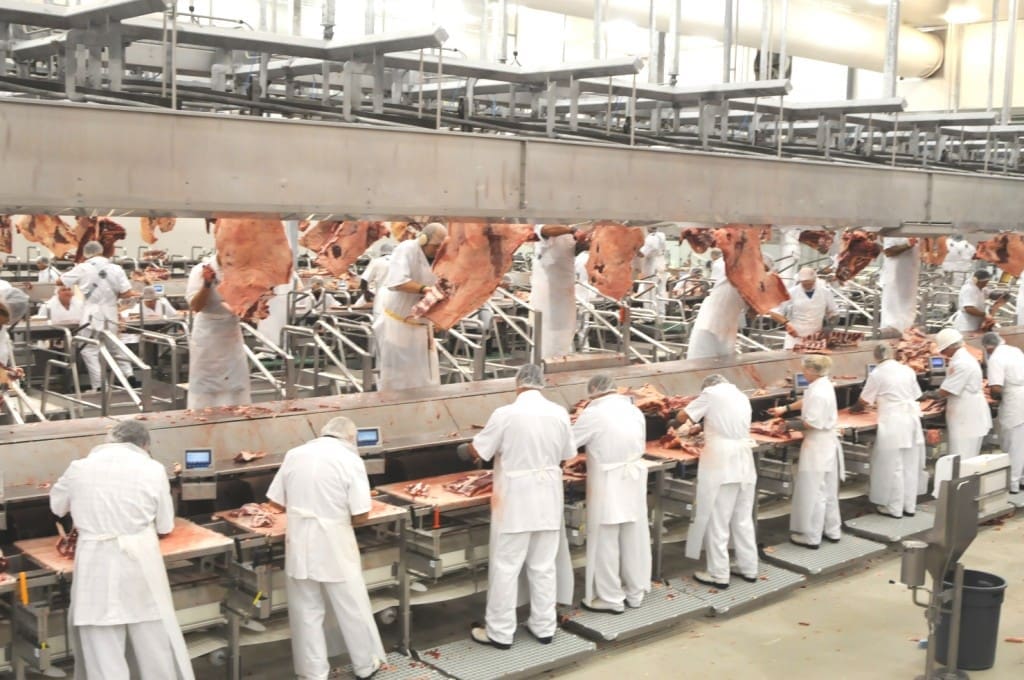Latest listings on AgJobs Central:
- Technical officer, Douglas Daly Research Farm (Northern Territory Government)
- Stud manager, Condobolin – Central Western Plains NSW (AAM)
- Manufacturing operator, Dalby QLD (Mort & Co)
- Feedlot maintenance hand, Jondaryan QLD (Stockyard)
- Stockyard supervisor, Cannon Hill QLD (Australian Country Choice)
- National sales manager, Sydney – NSW (Rimfire client)
- Inventory and dispatch manager, regional NSW (Rimfire client)
- Customer service and admin officer, regional NSW (Rimfire client)
- GM – Agricultural crop solutions, Sydney NSW (Rimfire client)
- Head stockman, Pilbara region WA (Pardoo Wagyu)
- Livestock manager, Goonoo, central QLD (Australian Agricultural Co)
- Head stockpersons – Headingly, Canobie and South Galway (AA Co)
- Farm overseer, Clare Valley SA (Lucas Group client)
- Chief operating officer – Regional QLD (McIntyre Agriculture, via Rimfire)
Click here to access these and other exciting meat and livestock supply chain jobs currently listed on AgJobs Central.

WORKPLACE injuries can spike in a new year as new staff are recruited and employees return to work in less than optimum physical condition.
Work Healthy Australia has this week offered some advice on the principle of ‘work hardening’, which can form an early intervention strategy to help minimise agribusiness workplace injuries.
Work hardening is a phrase used in many industries that utilise manual labour to describe the process of workers getting used to the physical demands of their role.
When the work hardening process is managed well, employees will be better able to adapt to their work environment.
Work hardening should aim to gradually increase the worker’s physical capabilities and tolerance to load in order to meet the requirements of their tasks. This will help to offset the strain of occupational over-use injuries on workers’ soft tissues (muscles, tendons, ligaments). A work hardening program should be constructed in collaboration with an onsite injury management provider, if available.
“As most work-related musculo-skeletal disorders result from chronic exposures, prevention activities designed to eliminate acute injuries should in time also reduce the overall magnitude and severity of these conditions,” Safe Work Australia says
Who should undertake work hardening?
New employees: Whether new to the industry or coming from a similar role, new employees will usually benefit from a work hardening program specific to their role.
Workers starting a new role within the company: Each role within a company will have its own specific task requirements, so workers are more likely to experience ‘work hardening pains’ after switching to a new role.
Workers returning from extended leave or non work-related injury/illness: The longer a worker has been off work (particularly if they are limiting their physical activity) the more de-conditioned they become. A work hardening program can help them quickly return to their usual role.
What are the benefits?
- It provides support for workers struggling to adapt to the physical demands of their job
- Improved employee retention
- Reduced reported injury rates/risk of serious injury
- It encourages regular physical activity among workers
- It teaches workers new self-management skills
When should workers start a work hardening program?
It is optimal to get new employees to start a work hardening program as soon as practically possible. The sooner an employee starts their program, the quicker they will reach the physical level required for their tasks.
If you plan to move employees to a new role, they can start their work hardening program prior to the move to start slowly building up their strength and conditioning.
How is a work hardening program developed?
A work hardening program should take into consideration the physical demands of each job, the current physical capabilities of the worker, and should be carefully constructed through collaboration with your onsite injury management provider. A work hardening program will commonly take into consideration the type of work, rotations and breaks, and will include appropriate warm up advice and manual handling training.
If a business uses one, an onsite injury management provider will provide workers with strengthening exercises which will allow them to reach the physical requirements of their job.
It also gives your provider a chance to catch any early signs of injury and manage this appropriately.
 Work Healthy Australia can provide advice and feedback on the benefits of work hardening, and answer any questions about how work hardening can enhance a workplace injury prevention and treatment strategy. Click here to arrange a discussion.
Work Healthy Australia can provide advice and feedback on the benefits of work hardening, and answer any questions about how work hardening can enhance a workplace injury prevention and treatment strategy. Click here to arrange a discussion.





HAVE YOUR SAY